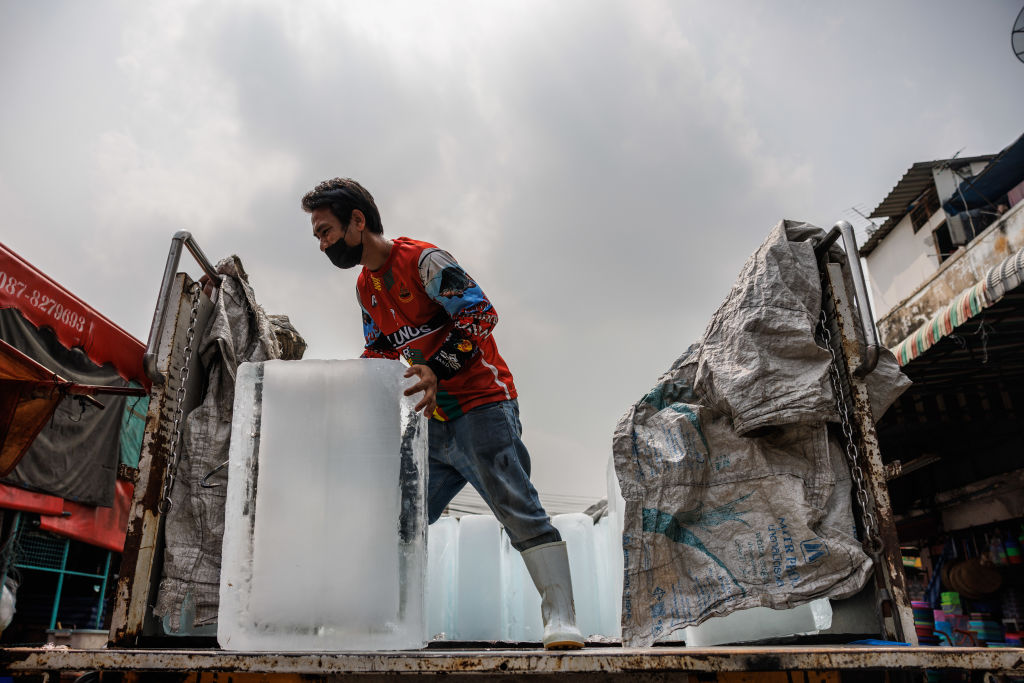
Asia remains in the grip of a blistering heat wave, chiming with predictions from climate scientists that 2023 could be the world’s hottest year.
In an ominous sign ahead of the northern hemisphere summer, an emerging El Nino weather pattern is pushing the mercury to unprecedented levels in southern parts of the continent.
Vietnam reported its highest ever temperature of 44.2C over the weekend, triggering power shortage warnings, while Laos also likely broke records. The Philippines cut classroom hours after the heat index reached the “danger” zone, reflecting the potentially deadly combination of heat and humidity.
More from TIME
Read More: How Heat Waves Could Have Long-Term Impacts on Your Health
The scorching temperatures follow a pattern of increasing extreme weather, caused by the accumulation of greenhouse gases in the atmosphere, that’s sending the world into uncharted territory. The sweltering conditions are testing the ability of governments to protect public health and also to prevent major disruptions to agriculture and power generation in economies that are still recovering from the ravages of Covid-19.
El Nino — characterized by warmer ocean temperatures across the Pacific — has far-reaching impacts on weather patterns around the world. It could bring relief to drought-parched areas of Argentina and the southern US, while blanketing parts of Asia and Australia with hotter, drier conditions. Coffee, sugar, palm oil and cocoa crops would be especially vulnerable.
The prolonged dryness across Vietnam, Laos, Myanmar, Cambodia and Thailand is due to suppressed rainfall over the past winter, said Tieh-Yong Koh, an associate professor and weather and climate scientist at the Singapore University of Social Sciences.
Read More: How to Build Up Your Heat Tolerance to Prepare for a Hotter World
“Because dry soil heats up faster than moist soil, a hot anomaly naturally forms as spring arrives,” he said, adding that this has been exacerbated by global warming over the past decades.
Temperatures in Thailand remained above 40C in many northern and central regions over much of last week, pushing power demand to a fresh peak. A group of businesses and banks have asked the government to prepare an action plan to deal with a potential drought that they say might last for three years.
Rainfall in Malaysia may be as much as 40% lower in some areas, which could put palm oil production at risk in one of the world’s biggest producers of the commodity. Authorities are closely monitoring the return of forest fires and air pollution. An El Nino in 2015 caused a particularly bad episode of haze that was one of the worst environmental disasters in Southeast Asia.
Read More: Where We’ll End Up Living as the Planet Burns
Elsewhere in Asia, scorching temperatures have also roasted parts of China, India and Bangladesh over the past few weeks. Yunnan province, a major aluminum hub in southwest China, suffered its worst drought in a decade last month. India is on alert for more heat waves following soaring temperatures in April that prompted school closures in some states and caused at least 11 people to die of heat stroke after attending an event.
—With assistance from Thomas Kutty Abraham, Nguyen Kieu Giang, Manolo Serapio Jr. and Anuradha Raghu.
More Must-Reads From TIME
- The 100 Most Influential People of 2024
- The Revolution of Yulia Navalnaya
- 6 Compliments That Land Every Time
- What's the Deal With the Bitcoin Halving?
- If You're Dating Right Now , You're Brave: Column
- The AI That Could Heal a Divided Internet
- Fallout Is a Brilliant Model for the Future of Video Game Adaptations
- Want Weekly Recs on What to Watch, Read, and More? Sign Up for Worth Your Time
Contact us at letters@time.com